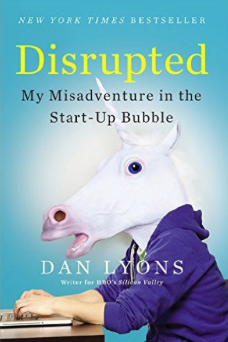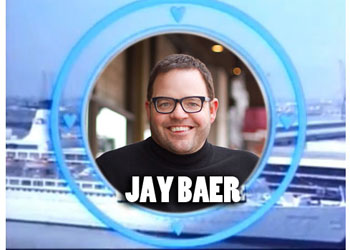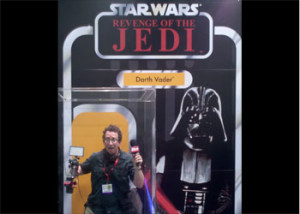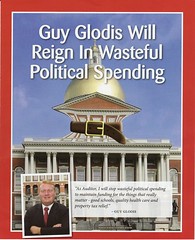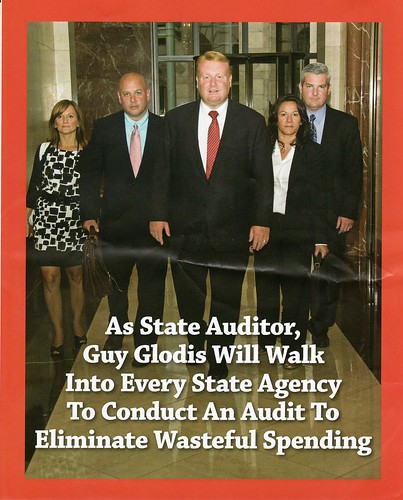Jay Baer is an acclaimed keynote speaker, New York Times best selling author, entrepreneur, technology investor, and social media and digital marketing consultant. His latest book is Youtility, and I had a chance to chat with him on Marketing Over Coffee (click if you prefer audio).
John: Today, we have a special episode. We have the author of Youtility, Jay Baer, with us. Jay, Welcome to the show.
Jay: Thanks very much. Time will tell whether I am a special guest or not.
John: We’ll be watching the numbers, and I think given the Jay Bayer freight train that has been accelerating over the past couple of months, I’d put money on you.
Jay: Thanks.
John: So, you’ve written NOW Revolution with Amber Naslund a while back. Your latest book is Youtility. It’s made the New York Times Best Seller List. Congratulations. Tell me a little bit about the book. Let’s give everybody the elevator pitch. What is Youtility about?
Jay: The difference between helping and selling is just two letters. But those two letters make all the difference. If you sell something, you could make a customer today. But if you help someone, you can make a customer for life. And the way you do that is by creating something that is so useful, people will pay for. It’s marketing that is truly and inherently valuable. It has intrinsic value. If you do that, you will win in the end.
John: Right. You’ve got a bunch of great case studies in there, too. It’s a perfect example of a strong business book. You’ve got a big idea, and then you’ve got a bunch of great examples. I have to give you credit for that because so many of these books, I can only hear so many times about Zappos before I’m all set. You definitely rocked a bunch of case studies here.
Getting to the bigger part of this, at the core of it, you’re doing something helpful. You’re doing some marketing activities that are not directly related to the product. You talked about the psychological front here, where the people in the company expect an immediate return. How do you address that? How do you tell people to take this leap of faith?
Jay: No doubt, it is a leap of faith because what Youtility really requires is for you to take a longer approach to the marketing success horizon. I will paraphrase Gary Vaynerchuck who says, “One of the problems with marketing today is that everybody wants to be a hunter and nobody wants to be a farmer.” And that’s exactly right.
Youtility is almost a playbook for becoming a marketing farmer. For building lifetime customer value through useful information and useful things that will yield attention and sales, and loyalty and advocacy, but over a longer period of time than what we customarily have been trained to think about.
Marketing has for 5,000 years, since the caveman tried to sell a rock to another caveman, has always been about buy now, not buy eventually. But since consumers are in control now, both with the messages they receive and how they receive them. You have to do something different, and I think that the thing that you need to do different is Youtility.
John: I love that hunter-farmer analogy because that fits perfectly. You talk about frame of mind awareness where like you said, it’s hunting. It’s hoping that the day you show up that somebody there is ready and willing to buy – and that’s really getting to be more and more challenging.
There’s the classic study about saying that 60% of the buying decision is made before the trigger gets pulled, which is just basically the death of enterprise software as far as Oracle yachts and all that kind of stuff.
You had Phoenix Children’s Hospital, Warby Parker, a few other case studies. Give us one case study of somebody that’s doing something on the Youtility front that is working well and fits your mold.
Jay: You bet. And thanks very much for mentioning earlier the variety of case studies that are in the book. That was very much curated and calculated in that I have read a lot of business books that had case studies, but they are of a particular type. I wanted to make sure that whether you’re B2B or B2C, small business, big business, anything in between, that you can see yourself in the stories that are contained in Youtility. So far the feedback has been that is the case, and I’m really very delighted about that. I’ll give you a couple of examples, just because I think that they epitomize what we are talking about a moment ago quite well with the psychological redirection.
One of my favorite examples in the book is from Columbia Sportswear. Columbia, of course, makes outdoor gear and jackets and pants and hats and stuff. They have a mobile application called What Knot to Do in the Greater Outdoors, and it actually shows you how to tie knots. It’s like “Hey, here’s how you tie a whatever, a fisherman’s knot, or a half hitch.” There’s dozens and dozens of knots. If you’re camping or hanging off the side of a cliff, that is massively useful information. If you’re recording a podcast, less so. I’m not tying any knots right now but maybe in a bit.
What’s interesting, though, is that Columbia Sportswear doesn’t sell rope. They’re not in the rope business. So the obvious marketing place – the old school marketing mentality for them – would have been, “We need a mobile app. Let’s create a jacket finder or a jacket configurator, where you decide are you fishing, or are you skiing? We’ll recommend a jacket to you.” That’s modestly interesting, and you’re going to use that one time, at best.
But instead, Columbia went the extra mile. They surveyed their customers and determined that, indeed, the vast majority of outdoors enthusiasts have their smartphones with them when they’re outdoors, both for safety and GPS purposes, and they said, “Oh, well let’s try and give them information that has greater value and over a longer period of time.” So, they created the knot app, which allows them to market sideways instead of marketing head-on, and now introduces their brand in their customers’ lives in ways that transcend the transactional.
In many cases with Youtility, that’s a really key concept, providing value in ways that transcend the transactional. Sometimes your products and services don’t have to be the star of the show. Sometimes information can be the star, and the products and services follow. We’re so eager to both lead customers to water and to make them drink. Maybe we should just lead them to water and they can figure out whether to drink themselves.
John: Right. You’ve got an interesting concept there: superior knowledge of your customer. Because as I said, basically anybody that’s really interested in knots, that’s probably somebody that could be buying Columbia stuff. Someone who’s not an Avid Indoorsman.
Jay: Right. Actually, I have the Avid Indoorsman domain name. Someday I’m going to do something with that.
John: That sounds like a merit badge. It would just have a picture of a couch on it.
Jay: I love it.
John: There’s a related point to this too, which is because this is not head-on marketing like you were talking about, you do have to market your marketing, which is a phrase that you use. Tell us about that.
Jay: Many companies are starting to embrace content marketing, which is fantastic. And one of the reasons that I wrote Youtility is that you see all of these companies starting to make content, but most of them don’t really know why they’re making content. They’re just making it to make it. It’s like making sandwiches. Youtility really is a strategic scaffolding for why to do content marketing.
But what I find – and I’m sure you’ve seen this, John – is that a lot of times companies, even good companies, smart companies, good marketers, put together some sort of a thing. It’s a blog, it’s a podcast, it’s an e-book, it’s an infographic, it’s a series of videos, it’s a new vine campaign or whatever, and it goes nowhere. It just falls flat. It’s not always – in fact, not often –because of the quality of the thing. It’s because the thing got no support. You have to create a marketing plan for your marketing assets.
You mentioned the Phoenix Children’s Hospital application, another mobile app. It’s a hospital in Phoenix obviously. They’ve got this app that’s very simple, that shows you how to pick out the best possible car seat. They have a two-person marketing team. For that introduction of just that very simple app, they had a 60-day launch plan with all kinds of different facets to it.
If you’re going to go through the trouble of using Youtility, use your corporate voice to actually promote that. Not only does that make sure that your utility will actually get more attention, it’s actually what people want.
This is why I say “content is fire, and social media is gasoline”. All companies would be better off using their social media to promote their very useful utilities than they are to promote themselves one 140-character press release at a time.
John: Yeah. I have to give you a shout out for pointing out Tom Fishburne’s cartoons. He’s got some marketing cartoons and there’s a great one talking about social media strategy. Basically the light grab, or the broadcast – these one-shot wasted campaigns that litter the corporate social media landscape. It’s everywhere.
Jay: Tom is so fantastic. Have you ever had him on the show?
John: No. This is like the classic new reality of business. Here’s somebody who is ridiculously awesome and has been doing their thing for five years and I’ve just never run across them because they’re in a total other world.
Jay: You’ve got to go through his archives. The hardest thing I had to do with Tom Fishburne is figure out which of his cartoons I wanted to license for the book. I started with 15 that I pulled up. I can’t have 15 of the same guy’s cartoons in the book. That’s going to look a little weird. It would be a graphic novel at that point, so I had to narrow it down to a couple. But he is just terrific. He’s so spot-on.
John: Are you going to be at the Profs B2B in October? Is that on your list, normally, of shows to head to?
Jay: Normally, yes. Unfortunately, I am otherwise detained this year. It is a little fast and furious with the book release and the unofficial book tour, if you will. I think I have 30 conferences between now and Thanksgiving. So unfortunately, I couldn’t get that one done this time.
John: You’re definitely in the burning a lot of fuel section of the book.
Jay: I fly on every airline, but because there’s no hub in Indianapolis, none with any concentration – and this is a true story, ladies and gents: I am Silver on 10 different American airlines.
John: I was going to say, this is one of my favorite stock travel tips for people that don’t know. Once you crack that nut with a single airline, you can just go to the other airlines and say “Hey, I’ve got status here. Give it to me. Otherwise, they’ll never fly you”. Most of the time they will say, “Okay. Just fax us your paperwork to prove it, and we’ll let you in.”
Jay: Interesting. I’m going to take you up on that because that could change my life considerably. I can’t even get TSA Pre because I’m not Gold on anybody, even though I’m at the airport almost every day, because nobody will let me in the program.
John: No kidding, to crack through security. Keep going back to Fishburne – he has that great article of the guy being by TSA and then over on the sign they’ve got the poster “Like us on Facebook.”
Jay: And that’s true. They actually do have those posters in some airports. I actually did a blog post once. They had a QR code in the TSA line that you could shoot to download a video of what to put in your carry-on. I’m thinking, “All right. This is a little bit technology for technology sake”.
John: Right. Where to find a quart-size bags.
Jay: I prefer the guy randomly screaming. You know how they do that? Every once in a while, you get the screamer guy at the front of the line like, “Make sure you take your laptops out, and take off your shoes.” But not all of them do it. It’s almost like at the ballpark where you’ve got some guys who sell popcorn who sell one way, and other guys have the red licorice and they’re like, “Red licorice!” It’s the same thing with TSA. You get some guys who are the screamers who have to go through every single regulation in case nobody’s ever flown before.
John: Right. And then there’s still 30% of the folks in line who will get to the front and they will have no clue of what the hell the guy was talking about.
Jay: No idea.
John: Shoes still tied, and a bushel of food that they’re wheeling through.
Jay: Five jackets. I feel bad for people who clearly don’t travel much, who have to dump something of value, and it happens all the time. Yeah, you should read instructions and you should pay attention and have some situational awareness, but it does make me sad to see somebody like, “Well, I can’t take this back to check it, so I’m going to have to leave my expensive wine,” or whatever the deal is.
John: Grandpa’s pocket knife and they have a 55-gallon drum of pocket knives in the back there.
Jay: Actually, there’s a blog about that I’ve seen, and it’s unreal. They get some crazy number just in loose change that’s left in the bins, they use it to partially fund TSA. No joke, John. It’s like $200,000 a year or something just of loose change. It’s great.
John: Yeah, I know. You just don’t respect the volume of the thousands of flights out of every single airport every day. It’s insane. So yes, GoToMeeting, why the hell are you not sponsoring this podcast? I guess that’s the question I have to ask about that.
Getting back to the book, you had another neat stat in there that I had never seen talking about IBM training their employees at social media, and the fact that in the classroom setting, one in eleven would succeed whereas employees trained one-on-one would hit three out of four. That blew me away. Have you got logic behind that?
Jay: Yeah. We weren’t involved in that program, but that kind of employee activation in social and training is some of the work that we do at Convince and Convert for corporate clients. We see those same kind of results all the time. It’s not so much about knowledge of social and understanding. It’s having that support group – somebody who is in the company who can give advice in the moment, who can cajole, who can advise.
This idea that what companies need to do is train their employees in social is not really true. They have to train, activate them, and support. It’s really a day to day hand-holding exercise. And when you do that, when you staff that, when you put the effort into that, the results are fantastic. But if you just say, “Well, you went through the webinar, good luck to you,” which is how most people do it, your results are mitigated.
John: Jumping over to mobile, too. There’s a section of the book where you talk about customer location-based stuff as far as being useful in location, their situation, and then taking advantage of seasonality or external factors. Talk a little bit more about that. How does that fit into Youtility?
Jay: Well, because the premise of Youtility is to provide things that are fantastically useful, one of the easiest and best ways to do that is to do so in a mobile environment because mobile, by definition, gives you information about what people are doing. Therefore, you can more easily add relevance that becomes useful. There’s lots of examples in the book on not only mobile apps, but sort of the mobile future that allows you to say, “Look, we know where you are from a location perspective, or we know what you’re doing, or we know what context you’re currently operating in, and we can deliver value to you in the moment.”
One of the things that I like as a mobile data opportunity is Cloth. Cloth is an application that formerly allowed you to organize your closet. You would get dressed, and then take pictures of what you were wearing and store those in a mobile app so that you could know what it is that you own and also what combination of outfits you particularly like, etc. (A) I’m a dude and (B) I’m middle-aged, so that use case didn’t resonate with me. It kind of seems like first-world problems, like “I’ve got to organize my closet on my iPhone.”
But then, what Cloth did was they added some additional data that is location aware. They have a real-time weather feed, and it knows where you are because your phone has got location services turned on. Using that real-time weather feed, Cloth now recommends to you based what’s in your closet, what you should wear that day based on the weather forecast. So now, it went from something I’m kind of like “eh” to something that is actually terrifically useful based on the fact that they can tap in to location data via mobile.
John: That’s great. It’s funny. As I was reading, I thought the same thing. Middle-aged guy, two kids under five years old. I really need a vomit detector. That would be the only thing that I could use for my wardrobe.
Jay: Which t-shirt could I wear unless I’m in a video webinar?
John: Right. You got the white collared shirt to pull down when the camera’s on. But otherwise, I’m pulling a Chris Berman in my Hawaiian shorts here. The joy of podcasting – theatre of the mind.
You had a part in the book here that flipped a light for me. We talked about showrooming a number of times on Marketing Over Coffee, and the death of the big stores, people price-comparing on site and all of that. But you had a great point with these big box stores. If you’re just a vending machine, that’s it. You’re out of luck. The vending machine thing kind of hit me. That’s exactly what’s going on. You literally put in your money and walk away and there’s no other value. Do you see this as the death of big box stores? Are they basically on the path to extinction, or is there a way around that for them?
Jay: There is a way around it, but it’s very difficult. Is there a way around it that will work economically? I’m uncertain. What you have to do is compete on something other than price. You have to make the experience of being in a store, being in a physical environment demonstrably better than buying something from your phone. If it’s not, you will eventually be gone. I think book stores are perhaps a better case than electronics stores, at least at this point.
I went to Barnes and Noble recently. I’m not picking on those guys. It’s just the reality. I went to Barnes and Nobles to find my own book, and it took me a long time to find the business section, and then is this organized by author’s last name? Is it organized by topic? If so, what topic would I be in? Social media or marketing or something else? There’s nobody there to help you and there’s all this other craziness going on. I’m thinking, unless I’m just browsing around and I want to be inspired by what books are available and I’m just sort of hoping for lightening to strike me in the book sense, I just couldn’t fathom a reason why that would be an easier way to shop, because it’s not.
But if you actually created an environment in an electronics circumstance or a book circumstance where it really was a better place to shop, and where you see that is in your independent book retailers who purposely have very much curated their offering. They’re like, “Look, we don’t have every book, but every book we have, we know is awesome. And we have a very high staff-to-customer ratio so we will proactively see if you need anything, and we will recommend books to you, and we’re going to have author signings, and we’re going to have readings, and we’re going to have free coffee, and we’re going to have comfy chairs, and we encourage you to browse instead of scolding you for browsing.”
If you create a better customer experience, you can win. But so far, very few of these big chains have been able to or willing to create a better experience because they’ve always won on price and now they can’t. There are some examples in the book of retailers that are trying to do that. They’re trying to make the shopping experience an experience.
John: Before we wind down, I did notice from your bio that you are a tequila and barbeque fan. Is that correct?
Jay: That is true. Sometimes simultaneously, but not always. I live in Indiana now, but I grew up in and was in Arizona forever. Subsequently, tequila is certainly a terrific beverage of choice and a maligned cocktail in most places because everybody has their bad college tequila story. But it is one of my goals to educate the public about the wonders of tequila. I have a party every year where we do a whole tasting and things like that to bring people into the fold.
I’m actually a certified barbeque judge at the Kansas City Barbeque Society and do that on occasion, go to competitions and judge. I’m actually having about 20 people over on Sunday, and doing a bunch of pork shoulder and six racks of ribs and all kinds of stuff.
John: You’re going to town. That’s great. As far as tequila, I always counsel, much like any alcohol, if your college stories involve a version that comes in a plastic bottle, don’t hold that against us. You get what you pay for.
Jay: Right. Don’t hold that against the spirit. You got what you deserved. That’s why I don’t drink gin. I have that college story about gin, and so it’s just not on my radar.
John: Now and then, we’ll go for a Bombay Sapphire or something like that. I was going to ask you, my friend, Chris Hart, a former co-worker of mine, has done a book, “Wicked Good Barbeque”. Have you checked that out? Have you seen it?
Jay: No, I have not. I will do that right now.
John: I’ll hook you up.
Jay: I will go down to Barnes and Nobles and I will look for it.
John: Yeah right – and not find it. I’ll talk to him, and I’ll get you a copy. When we get off, I’ll get your snail mail.
Jay: I’d appreciate that. That’d be great.
John: So the book is Youtility on Amazon.com. It’s climbing the charts over there, so you should have no trouble. Instead of just wandering aimlessly around your big box bookstore, you can just search for Jay Baer or Youtility.
Jay: The best place to buy it, if somebody wants to buy it, buy it at an airport because I can get some more airport copies sold this month, they will keep it in the airports. So, if you’re traveling, buy it at an airport.
John: It’s all about airport frontage, isn’t it? Just like the spare change, those copies just fly away of their own accord. That’s the place to be.
Jay: That’s right.
John: Good deal. That will do it for this week. Jay, thanks for stopping by.
Jay: Thanks for having me. I really appreciate it.

